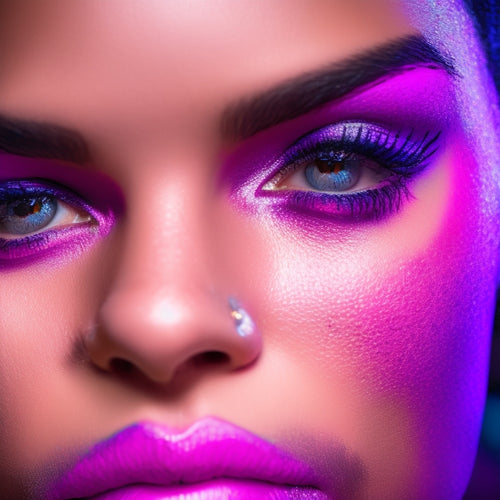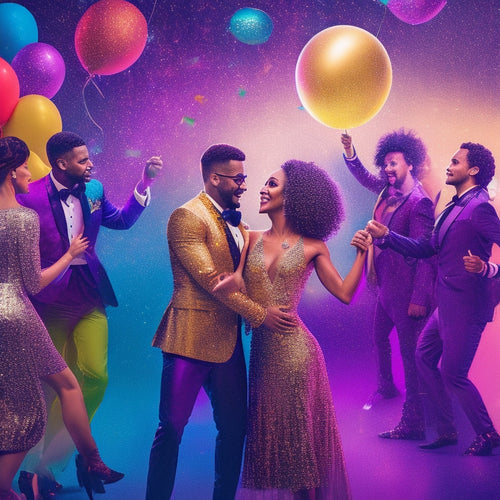
Enhance Education Through Dance and Fiction Integration
Share
By integrating dance and fiction into educational curricula, educators can tap into a powerful synergy that enhances creativity, critical thinking, and collaborative skills, while fostering a more engaging and inclusive learning environment. This paired learning approach merges movement and imagination, encouraging active learning and stimulating creativity. As educators explore this intersection, they can develop innovative evaluation methods to capture the complexity and diversity of student performances. By embracing this holistic approach, educators can discover new possibilities for student growth and expression, leading to a deeper understanding of complex concepts and themes, and ultimately, a more enriching educational experience awaits.
Key Takeaways
• Integrating dance and fiction in curricula enhances creativity, reading comprehension, and critical thinking in students.
• Collaborative dance performances inspired by fiction promote communication, problem-solving, and empathy skills among students.
• Merging movement and imagination fosters holistic learning, cognitive development, and creativity in students.
• Incorporating dance and fiction in education encourages active learning, celebrates diversity, and stimulates intellectual curiosity.
• Innovative evaluation methods, including peer feedback and self-assessment, are necessary to capture the complexity of student performances.
Harnessing the Power of Paired Learning
In addition to incorporating dance and fiction into educational curricula, educators can tap into the full potential of paired learning, fostering a dynamic and engaging learning environment that simultaneously enhances creativity, reading comprehension, and critical thinking skills. This innovative approach enables students to explore complex concepts through multiple lenses, stimulating creativity and encouraging active learning.
Additionally, paired learning promotes enhancing collaboration among students, as they work together to create dance performances inspired by fiction. By doing so, students develop essential skills such as communication, problem-solving, and empathy. As a result, educators can create a rich and inclusive learning environment that celebrates diversity, creativity, and intellectual curiosity.
Integrating Movement and Imagination
How can educators effectively merge movement and imagination to create a holistic learning experience that not only enhances cognitive development but also fosters creativity, self-expression, and emotional intelligence?
By integrating movement and imagination, educators can create a dynamic learning environment that engages students on multiple levels.
Here are some ways to achieve this integration:
-
Use movement exploration to bring fictional characters to life, allowing students to embody their personalities and traits.
-
Employ storytelling through dance to convey complex emotions and themes, making abstract concepts more accessible.
-
Encourage students to create their own dance narratives, promoting creativity and self-expression.
-
Incorporate role-playing exercises that combine physical movement with imaginative scenarios, developing empathy and understanding.
-
Use music and dance to evoke emotions and atmospheres, immersing students in the world of fiction.
Assessing Creative Expression
As educators aim to integrate movement and imagination, the need to assess creative expression becomes vital, requiring innovative evaluation methods that capture the complexity and diversity of student performances.
Performance evaluation should be a multifaceted process, incorporating peer feedback to provide students with a thorough understanding of their artistic expression. Self-assessment is also essential, enabling students to reflect on their own creative journey and identify areas for improvement.
Frequently Asked Questions
Can Dance Integration Be Adapted for Students With Disabilities?
When adapting dance integration for students with disabilities, incorporating Accessible Choreography and Inclusive Movement is essential, ensuring equal opportunities for all to engage, express, and learn through dance.
How Do You Measure the Impact of Fiction on Student Creativity?
"Did you know that 85% of students who engage in creative writing activities show significant improvements in creative thinking? To measure fiction's impact on student creativity, employ Creative Assessments that encourage Fictional Expression, such as narrative writing, character development, and storytelling, to foster imagination and innovation."
Are There Any Specific Dance Styles Recommended for Education?
When incorporating dance into education, consider Cultural Fusion styles that blend traditional and modern techniques, fostering Kinesthetic Learning and promoting cultural understanding, while allowing students to express themselves through dynamic, energetic movements.
Can Paired Fiction Be Used for Teaching Other Subjects Like Math or Science?
Pairing fiction with subjects like math or science fosters literary connections, allowing students to approach complex concepts through cross-disciplinary approaches, cultivating a deeper understanding of abstract ideas and their real-world applications.
Are There Any Grants or Funding Available for Arts-Integrated Programs?
"Federal support, such as the National Endowment for the Arts, and private donors, like the Kennedy Center's ArtsEdge program, offer grants and funding opportunities for arts-integrated programs, providing valuable resources for innovative educators."
Related Posts
-

Why Hip Hop Dancers Need Flawless Makeup Tutorials
You need a flawless makeup look that can keep up with your high-energy hip hop dance routines, emphasizing the import...
-

10 Online Makeup Tutorials for Ballet Dancers
You're about to discover a range of makeup techniques specifically designed to enhance your ballet performances, from...
-

Master Pattern Dances for Social Fun
Mastering pattern dances for social fun requires a deliberate blend of technical skill, teamwork, and practice, yield...


